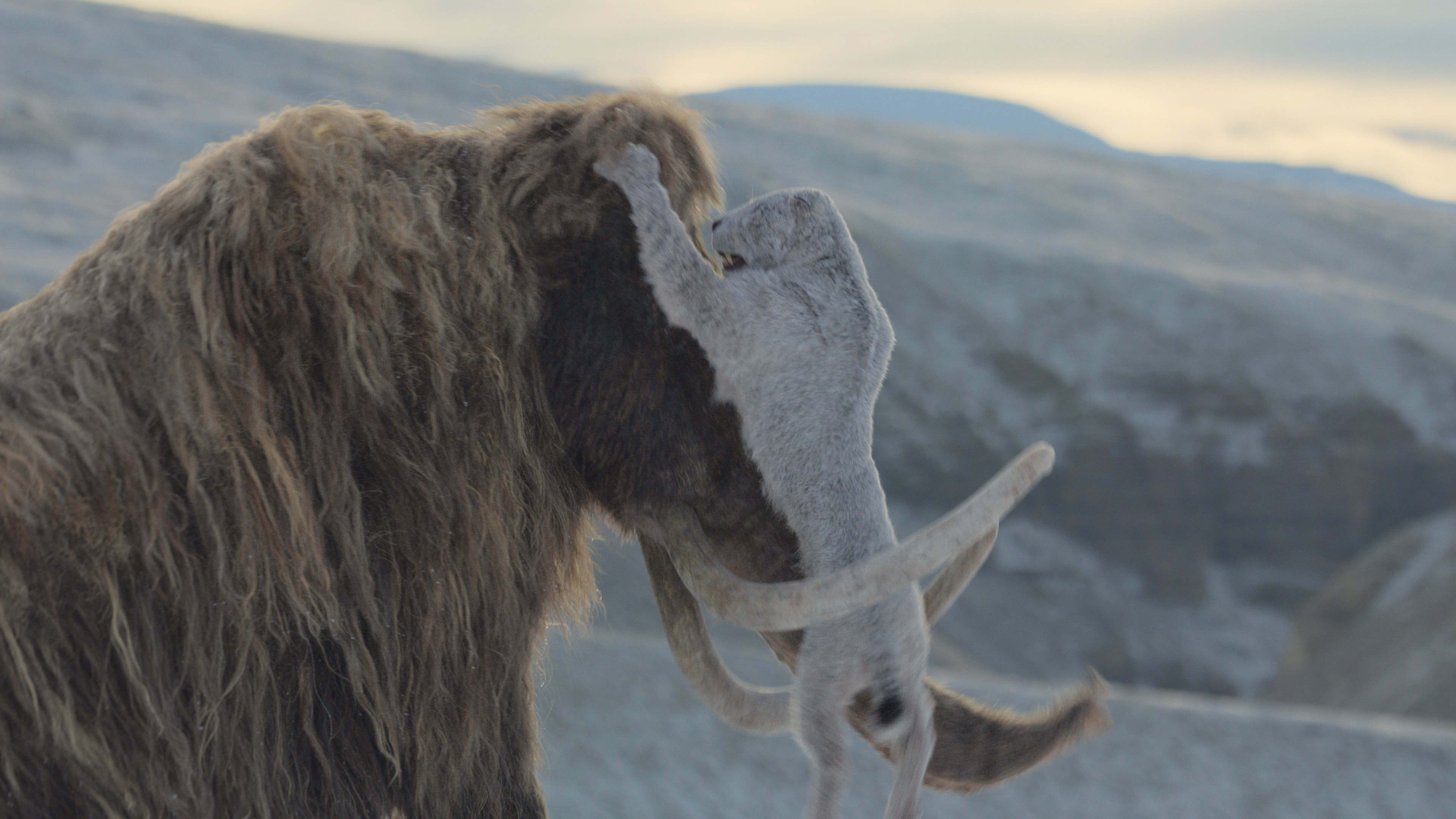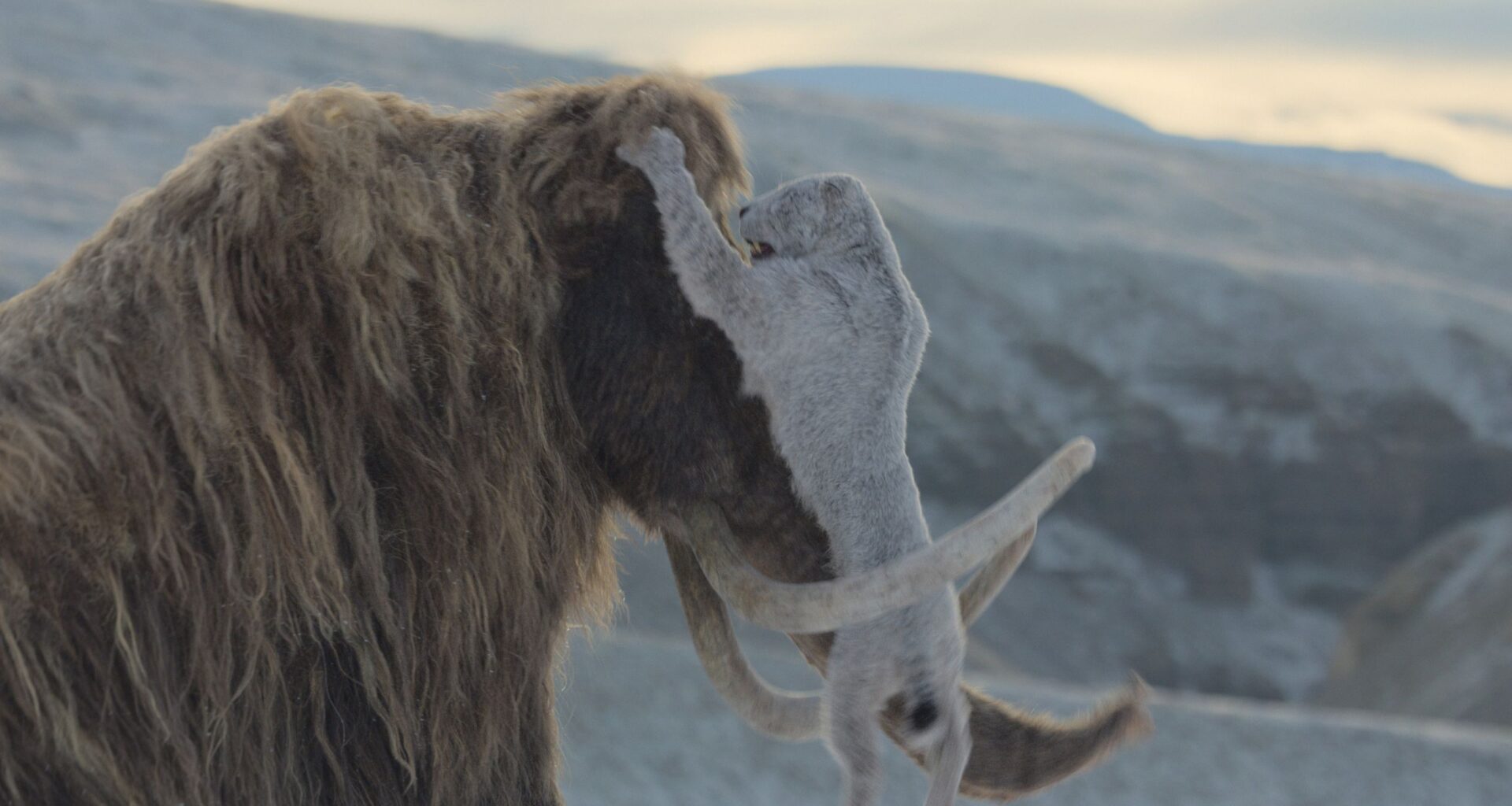A stunning new animation shows saber-toothed cats attacking a herd of woolly mammoths toward the end of the last ice age in the frozen north of North America.
Airing Wednesday (Nov. 26) in an episode of Apple TV‘s upcoming series “Prehistoric Planet: Ice Age,” the clip explores how iconic ice age animals adapted to changes in their environment as the climate began to warm and their snowy world gradually disappeared. In the video, a pack of five scimitar-toothed cats (Homotherium serum) — a now extinct species of saber-tooth cat — ambush a herd of woolly mammoths (Mammuthus primigenius) that includes a tiny calf and a large adult male.
“That whole story is set in the frozen north, sort of Alaska-Yukon,” Mike Gunton, executive producer of the upcoming series and creative director of BBC Studios’ Natural History Unit in the U.K., told Live Science in an email. “Those creatures both were sort of stars of the Ice Age, hyper-adapted to life in the cold. The story really is about what happens when those two types of animals are finding their world changing.”
You may like
As the last ice age drew to a close about 11,500 years ago, ice sheets retreated across North America. This drove some species into extinction, as did hunting from humans living in the Americas at the time, reducing the animal populations that scimitar-toothed cats preyed on. “The prey that they would normally feed on are not around as much as they were,” Gunton said. “The fortune of that day is that the cats find a herd of mammoths coming into their pack, and they take the opportunity to try and hunt them.”

A new Apple TV series brings to life iconic animals of the last ice age. (Image credit: Apple TV)
Woolly mammoths also struggled to survive at the end of the last ice age, and the clip shows the herd taking an unusual route across a plain to find new feeding grounds, Gunton said. Exposed — as they are in the clip — the mammoths come under attack. After a nail-biting few seconds where a scimitar-toothed cat leaps onto the male mammoth and hangs off his trunk by the claws, the mammoth overpowers the five cats and scares them off.
Meanwhile, the females and the calf retreat, huddle together and watch the scene unfold. While researchers think that woolly mammoth herds were female-led and males dispersed at a young age, sexually-mature males occasionally joined herds to mate, Gunton said.
“These males have what they call [musth] — they have these glands on the temporal area of their skulls, and they weep, producing particular pheromones — and that gets everybody excited,” he said. “This mammoth was with them [in the clip] because you get males coming to join a herd with the idea of mating with the females, and they will spend a lot of time wandering around with them.”
The mammoths survive this encounter, but the scimitar-toothed cats eventually triumph in a sequence later in the show, Gunton said.
“At the end of the program, we see them trying again with [a] different strategy,” he said, adding that one of the cats lunges off a high rocky outcrop onto the back of the male mammoth, giving the other cats the opportunity to pile on and take the mammoth down. “And then they feed,” Gunton said.
The hunting technique of scimitar-toothed cats in the second clip is similar to that of leopards, which also leap onto their prey from above, Gunton said. Recreating these attacks was a big challenge for the filmmakers, because “you’ve got two animals created in visual effects actually interacting with each other,” he said.
A bigger challenge still was making the animals appear realistic, given that they are covered in fur and moving in a snowy landscape.
“Every one of those creatures will have millions of individual little hairs on it, all of which behave on their own independently,” Gunton said. “Then they’re doing stuff in snow, so you’ve got complex interactions between snow itself. It’s sort of the pinnacle of what is tough to do in this series.”

